From the Chicago Reader (July 28, 2000). — J.R.
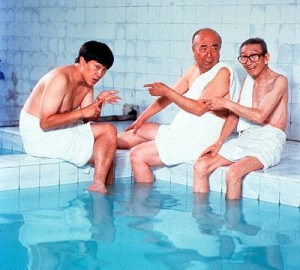
Shower
Rating ** Worth seeing
Directed by Zhang Yang
Written by Liu Fen Dou, Yang, Huo Xin, Diao Yi Nan, and Cai Xiang Jun
With Zhu Xu, Pu Cun Xin, Jiang Wu, He Zheng, Zhang Jin Hao, Lao Lin, and Lao Wu.

In these pages last week I wondered whether adapting Marcel Proust was the best way for the talented Raul Ruiz to spend his time. Later I heard from some colleagues who write for suburban papers that their editors had forbidden them to review Time Regained — a standard form of censorship that made me wonder whether my expressing misgivings would encourage the editors to believe they were justified. Especially stomach turning was the spurious reason they reportedly gave: that people in the burbs wouldn’t care about such a movie.
But what else would persuade a suburbanite to travel all the way to Chicago to see a film if not something like Time Regained? Surely not a chance to see The Patriot on a slightly bigger screen (democracy at work: we can choose where to see bad summer movies). I suspect that the contempt these suburban editors have for their readers is a form of fear: if they admitted that better fare was available elsewhere, the studios might get annoyed and withhold some of their advertising dollars. Read more
The following is a lecture delivered at a symposium, “Yasujiro Ozu in the World,” organized by Shigehiko Hasumi in Tokyo on December 11, 1998. The other participants, apart from Hasumi himself, were Jean Douchet (the keynote speaker), Hou Hsiao-hsien, his screenwriter Tien-wen Chu, and Thierry Jousse. I’m proud to say that Hasumi, my favorite contemporary film critic, has included a link to this text on his own web site, mube.jp. — J.R.
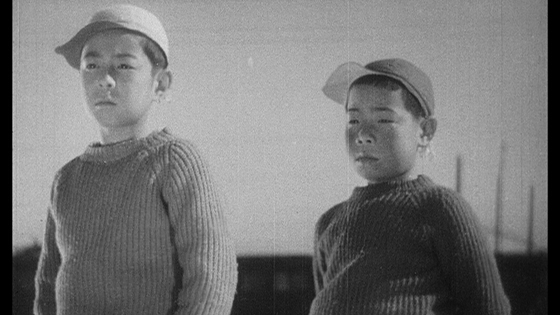
I’d like to preface these remarks by citing a moment from Ozu’s I Was Born, But… (1932) and the particular significance it has for me. During the home movie projection which marks the critical turning point in the film from comedy to tragedy, and shortly before the clowning of the father in front of his boss appears in one of the home movies, the father’s two little boys start having a debate about the zebra they see on the screen — does it have black stripes on white, or white stripes on black? — creating a disturbance that momentarily halts the screening. In comparable fashion, a spurious, distracting, and no less innocent debate has been persisting about Ozu for years: is he a realist or a formalist? What seems lamentable about this debate is that it fails to perceive that cinematic forms and social forms are not alternatives in the world of Ozu but opposite sides of the same coin, so that it should be impossible to speak about one without speaking about the other. Read more
From the Chicago Reader (July 23, 1996). Jazz fans who might be considering whether to watch this feature should hunt down instead Altman’s Jazz ’34, made at the same time in the same location and infinitely better. — J.R.
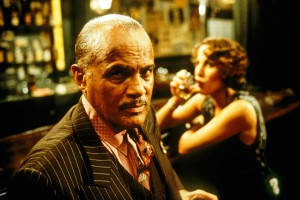
The sets — designed by Stephen Altman — are great, and so is the 30s jazz, but the story of this Robert Altman memory piece about his hometown, written with Frank Barhydt (Short Cuts), is borderline terrible. It counts on the dubious premise that a gangster (Harry Belafonte) would fritter away a whole night deciding what to do with a thief who rips him off — thereby enabling the thief’s significant other (Jennifer Jason Leigh) to kidnap a society lady (Miranda Richardson) and Altman to crosscut to his heart’s content as he exposes the inner workings of a city on the eve of a local election. The conception of character is so limited that the kidnapper’s seems to consist exclusively of Jean Harlow imitations, while the kidnappee’s seems defined only by drug addiction. Charlie Parker and his mother are gratuitously shoehorned into the plot, though some of the movie’s other strategies for imparting period flavor work better. The flip cynicism, which by now has become Altman’s trademark, doesn’t work at all. Read more
From the April 1, 2002 Chicago Reader. — J.R.
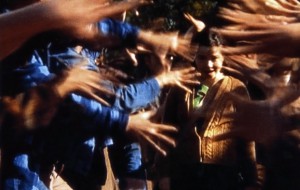
Disgusting yet interesting, Lars von Trier’s much heralded musical (2000) — or, more precisely, feature-length music video with interspersed dialogue — deserves to be seen because it’s a freakish provocation, not just because it won the Palme d’Or at Cannes. A Czech immigrant working at a factory in rural Washington State in the early 60s (Icelandic pop star Bjork) is going blind and knows her son will too if she can’t save enough money for an operation; the story gets even more melodramatic once a murder trial takes over. Reportedly shot with 100 digital video cameras (very few of which manage to find a good angle), the film reprises the sadomasochistic celebration of female suffering in Breaking the Waves, and with it von Trier affirms his solidarity with America’s impoverished and downtrodden people (apparently a diversion from his career in Denmark as a porn producer). The musical numbers are a weird blend of rock video and Jacques Demy postmusicals, with lousy songs and choreography and a distance between the music and the action that suggests an amateur remake of Pennies From Heaven. But in spite of everything, Bjork’s absolute dedication and submission to the material periodically blew me away. Read more
From the Chicago Reader (January 28, 2016). — J.R.
Son of Saul ****
Directed by László Nemes
“The sense of being lost is what we wanted to convey. That is what was missing before [in most earlier movies about the Holocaust]: one individual being lost.” — László Nemes to Andrea Gronvall, Movie City News
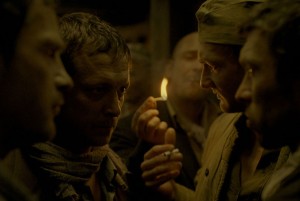
László Nemes’ Hungarian debut feature, Son of Saul, opening this week at the Music Box, is easily the most exciting new film I’ve seen over the past year, and a casual look at the prizes and accolades it’s received over the past eight months, starting with the Grand Prix and the FIPRESCI prize at Cannes, shows that I’m far from alone in feeling this way. Even my colleagues who dislike or dismiss the films concede that it’s a stunning technical achievement. But the moment one starts to describe what the film does, or even what it’s about, a certain amount of dissension sets in.
Nemes and his lead actor Géza Röhrig have consistently described their intentions as wanting viewers to experience viscerally and as accurately as possible what Sonderkommando members went through in Auschwitz in October 1944. These were the Jewish prisoners obliged to lead other Jews into the gas chambers, search their clothes for valuables before, during, and after they were being gassed, and then dispose of their bodies — carting them off, burning them, and then shoveling away their ashes, receiving in return slightly better food and quarters before eventually being exterminated themselves. Read more
My column for the April 2016 issue of Caimán Cuadenos de Cine. — J.R.
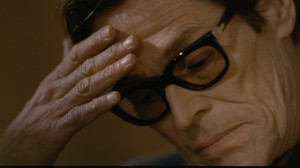
1. I can easily understand why some of Abel Ferrara’s biggest fans have certain reservations about his Pasolini, available now on a splendid region-B Blu-Ray from the BFI. Even if it’s a solid step forward from the stultifying silliness of Welcome to New York, it lacks the crazed, demonic poetry of Bad Lieutenant, The Addiction, and New Rose Hotel; most disconcertingly, it’s a responsible, apparently well-researched treatment of one of the most irresponsible of film artists, made by another film artist generally cherished for his own irresponsibility. And stylistically, it’s almost as if Ferrara has moved from being the great-grandson of F.W. Murnau to being the grandson of Vincente Minnelli — although one could argue, more precisely, that this isn’t really an auteur film at all. Yet as a portrait of the great and uncontainable Pier Paolo Pasolini, filtered through the last day of his life –- a day focused on new creative work (a novel in progress and a film in preproduction) as well various other activities, at home and on the street -– it carries an undeniable conviction and emotional authenticity in which the prosaic strengths of Lust for Life may finally be more relevant to this film’s serious ambitions than the poetic flourishes of a Faust or a Tabu. Read more
I’ve been trying for years to track down and see Susan Sontag’s fourth and final film, Unguided Tour (1983), and now, quite by accident, I’ve discovered that it’s available online, here. If, like me, you can’t follow the Italian without English subtitles, perhaps the best solution would be to read Sontag’s original story, the final one included in her 1978 collection I, etcetera. [3/6/2016]
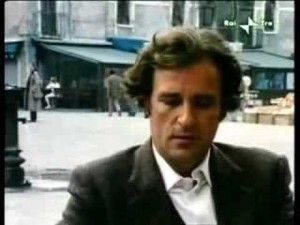
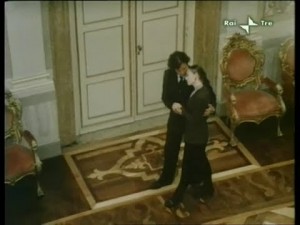
A lengthy postscript: Thanks to the generosity of David Heslin and the wonders of the Internet, there are the complete English subtitles:
1
00:00:39,362 –> 00:00:44,104
<b>UNGUIDED TOUR</b>
2
00:00:44,400 –> 00:00:47,558
by Susan Sontag
3
00:01:49,488 –> 00:01:52,357
A tourist city different from
any other.
4
00:01:54,195 –> 00:01:56,284
Different from Florence.
5
00:01:57,995 –> 00:01:59,883
Different from Siena.
6
00:02:01,316 –> 00:02:03,003
Different from Rome.
7
00:02:04,664 –> 00:02:06,476
Different from Athens.
8
00:02:08,036 –> 00:02:09,697
Or Dubrovnik.
9
00:02:11,711 –> 00:02:13,699
Because there’s an imaginary kingdom
10
00:02:13,850 –> 00:02:16,241
of which this city is the capital.
11
00:02:17,310 –> 00:02:19,550
of which this city is the centre.
12
00:02:24,559 –> 00:02:28,711
There was a very dear friend of mine,
an Argentinian film-maker in exile
13
00:02:29,139 –> 00:02:31,165
who fled to save his skin.
Read more
My column for the June 2016 issue of Caimán Cuadenos de Cine. — J.R.
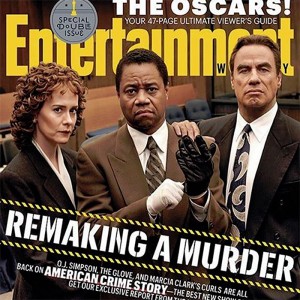
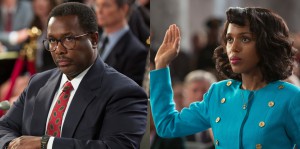
One of the frustrations about living in the U.S. these days is the virtual absence of TV news, replaced by a media circus built around the omnipresence of single events — the deaths of Frank Sinatra and Michael Jackson, or, this year, the U.S. Presidential primary elections. As with most Hollywood blockbusters, these circuses are designed to screen out the rest of the world, assuming that Americans are interested in sensation more than thought and can only focus on one momentous event at a time (which means that the delighted TV pundits can ignore the rest of the world with impunity). So it’s logical that everything Donald Trump utters or tweets gets more coverage than anything said by Barack Obama and that the same sound bites from Trump and the other candidates get endlessly recycled, thumbed over, and analyzed.
Consequently, it’s at once ironic and appropriate that the two most relevant and contemporary cinematic events that I’ve seen lately are both cable TV docudramas about media circuses of the 1990s, both of which offer certain insights into how a Frankenstein monster such as Trump was created thanks to the unholy marriage of celebrity culture and what subsequently became known as “reality TV”: a ten-part miniseries called American Crime Story: The People vs. Read more
From the Chicago Reader (May 1, 1995). — J.R.
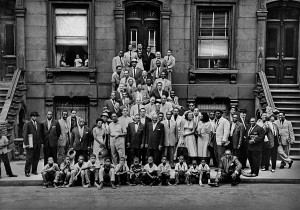
There are only a few great jazz documentaries, and each has a style all its own. This one-hour 1994 dissection of a 1958 group photograph of 57 key jazz musicians is special both as oral history and as a survey of the art. If you wanted to introduce someone to what jazz is all about, this would be an ideal place to start, a labor of love by jazz enthusiast and former Chicago journalist Jean Bach, who did an awesome job of tracking down the surviving participants in and witnesses to the picture taking, even locating some silent home-movie footage by bassist Milt Hinton and his wife. Included are elegant thumbnail profiles of such musicians as Lester Young, Jo Jones, Count Basie, Charles Mingus, Pee Wee Russell, Red Allen, Roy Eldridge, Horace Silver, Jimmy Rushing, Coleman Hawkins, Dicky Wells, and Stuff Smith, most of them offered by fellow musicians, along with samples of their music and comments on their placement in the photograph. (JR)
 Read more
Read more
From the Chicago Reader (May 1, 1995). — J.R.
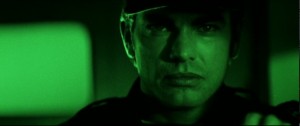
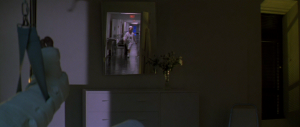
Steven Soderbergh’s remake of the classic noir thriller Criss Cross tells substantially the same story (a divorced couple who can’t let go of each other, an armored car heist that grows out of their deceptions after the avaricious woman marries a hood) but gives it such a different emphasis that it functions only fitfully as a thriller (chiefly in a dazzling hospital sequence near the end). What it unmistakably has is a feeling for the insecurity of contemporary relationships, an often ravishing visual style, some very funny crusty dialogue, and subtle and sensitive direction of actors (Peter Gallagher, newcomer Alison Elliott, William Fichtner, Anjanette Comer, Elisabeth Shue, Adam Trese, Joe Don Baker, and Paul Dooley, among others). This is a quirky personal effort with much of the humor and pain of Soderbergh’s earlier Sex, Lies, and Videotape and King of the Hill, though filtered through material that sometimes seems to engage the writer-director less fully; as partial compensation, the ‘Scope cinematography is stunning. (JR)
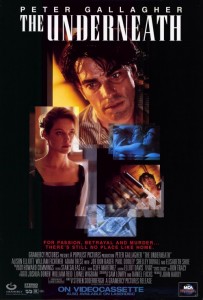 Read more
Read more
From the Chicago Reader (September 1, 1995). — J.R.
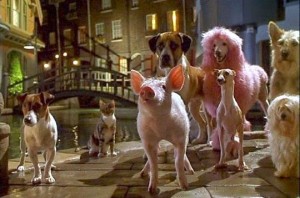
This 1995 live-action film about a piglet that behaves like a sheepdog is impressive, though I do think it’s creepy to be so entertained by a movie in which I can’t tell from one moment to the next whether I’m watching a real animal or a fake. Writer-producer George Miller is the Australian wonder responsible for both the antihumanist brilliance of the Mad Max movies and the humanist brilliance of Lorenzo’s Oil, and that same paradox animates this movie. Directed and coscripted by Chris Noonan from a novel by Dick King-Smith, the film succeeds because its talking animals are more than just ersatz humans. In addition the lip sync is more skillful than in Forrest Gump, the characters (both animal and human) are solidly conceived, and the storytelling and visuals are expertly fashioned. With James Cromwell and Magda Szubanski. G, 92 min. (JR)
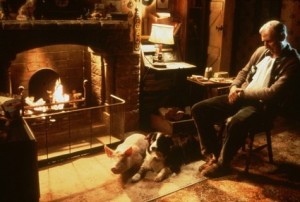 Read more
Read more
From the Chicago Reader (September 2, 1994). — J.R.

** MY LIFE’S IN TURNAROUND
(Worth seeing)
Directed and written by Eric Schaeffer and Donal Lardner Ward
With Schaeffer, Ward, Lisa Gerstein, Dana Wheeler Nicholson, Debra Clein, Sheila Jaffe, John Sayles, Martha Plimpton, Phoebe Cates, and Casey Siemaszko.

As a member of the New York film festival’s selection committee, I’ve seen or sampled close to 150 films (shorts and features) this summer that haven’t yet opened in the United States, about a quarter of them American. And I’ve come to a few rough conclusions about the differences between new American movies and those recently made elsewhere, and had a few thoughts about trends in American studio and independent pictures. All of them are fairly depressing.
One major difference between foreign and American fiction features stands out: those made in other countries tend to be about how people live today, and those made here tend to be anything but. The few American movies that spring to mind as exceptions are already being regarded within the business as uncommercial — difficult, marginal works earmarked for “special” audiences.
This state of affairs is partly the result of new definitions of “universality” developed by the studios over the past several years, which generally suppose that the ideal movie viewer has the taste and sensibility of a ten-year-old boy: think of the well-received Speed, Forrest Gump, and True Lies, for instance, none of which betrays a view of the adult world any more developed than those in The Lion King and The Mask. Read more
From the Chicago Reader (March 1, 2002). — J.R.
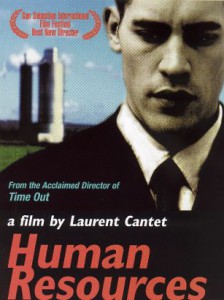
In Laurent Cantet’s 1999 French feature, written with Gilles Marchand, a student at a Paris business school returns home to Normandy to intern at the factory where his father has worked for 30 years. When the son and other workers go on strike and the antiunion father is let go, the son finds himself and his father on opposite sides of the fence. This sharp, convincing, and utterly contemporary political film calls to mind some of Ken Loach’s work, full of passion as well as precision. Cantet’s subsequent film, L’Emploi des Temps (Time Out), a prizewinner in Venice, shows an even more masterful grasp of the business world and all that it entails. This filmmaker is definitely someone to get acquainted with. In French with subtitles. 100 min. (JR)
 Read more
Read more
From the Chicago Reader (August 23, 2002). — J.R.
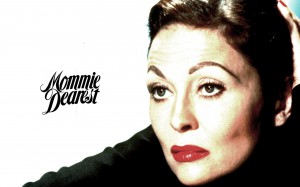
In spite of its reputation, and thanks in part to Faye Dunaway’s remarkable performance as Joan Crawford, this 1981 adaptation of Christina Crawford’s memoir about her driven, abusive mother is arguably too good to qualify as camp, even if it begins (and fitfully proceeds) like a horror film. Director Frank Perry, who collaborated with three others (including producer Frank Yablans) on the script, gives it all a certain crazed conviction. With Diana Scarwid, Steve Forrest, and, as Louis B. Mayer, Howard da Silva. PG, 129 min. (JR)
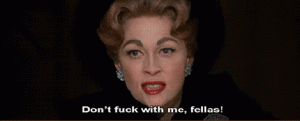 Read more
Read more
From the Chicago Reader (July 1, 2002). — J.R.
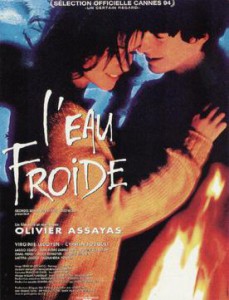

Not long before embarking on his comedy Irma Vep, Olivier Assayas directed this powerful 1994 feature about doomed teenage love as part of the excellent French TV series All the Boys and Girls in Their Time, in which various filmmakers (including André Téchiné, Chantal Akerman, and Claire Denis) dramatized stories set during their teenage years, scoring them with the pop music of the period. Assayas’s contribution, perhaps the most affecting in the whole series, takes place on the outskirts of Paris in 1972. (Having lived in France during that period, I can report that his grasp of its countercultural lifestyles is uncanny.) Virginie Ledoyen and Cyprien Fouquet are letter-perfect as two 16-year-old delinquents from broken homes — the former periodically sent to an asylum by her Scientologist mother and boyfriend, the latter raised by a single father (New Wave regular Laszlo Szabo) — and when they run away together, one can’t imagine that they have anywhere else to go. The beautiful and heartbreaking plot culminates in a party at and around a country house, and Assayas’s sustained treatment of this event — the raging bonfire, the dope, the music and dancing — truly catches you by the throat. Read more

























